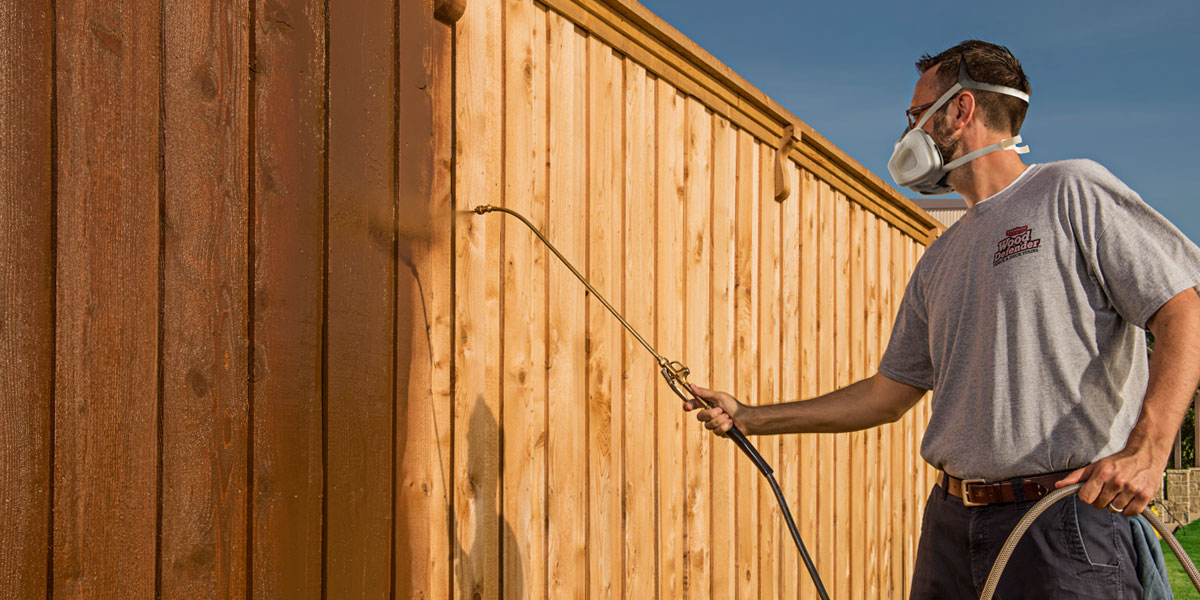Restore Your Fence's Appearance with Top quality Fence Staining!
Wiki Article
Exactly How to Choose the Right Fence Stain for Your Property
When it pertains to enhancing the appearance and sturdiness of your building's fence, picking the ideal stain is an important choice that needs careful factor to consider. With a myriad of choices available out there, each dealing with various wood kinds, colors, and openness levels, the process can quickly end up being overwhelming. Making an informed option can dramatically influence the general visual appeals and long life of your fencing. So, exactly how can you ensure that you select the excellent fence discolor that aligns with your residential or commercial property's design and upkeep needs? Allow's discover some vital aspects to lead you in this decision-making process.Recognizing Timber Types
To select the appropriate fence discolor, it is essential to have an extensive understanding of the different types of wood frequently made use of for secure fencing. When choosing a fencing discolor, it is crucial to take into consideration the type of timber being utilized to guarantee compatibility and ideal protection. Comprehending the attributes of different wood kinds will help you make an educated choice when it comes to selecting the best fence stain for your building.Picking the Right Color
Picking a suitable color for your fencing stain is an essential choice that significantly impacts the total aesthetic charm of your residential property. Lighter colors such as whites or light grays can make a fence show up bigger and add a touch of style to your home. Inevitably, the right color selection will boost the appeal of your fencing and raise the general aesthetic allure of your home.
Taking Into Consideration Openness Degrees
When picking the ideal shade for your fence stain, one more essential aspect to take into consideration is the level of transparency that will ideal fit your residential or commercial property's aesthetic and maintenance demands. Openness levels in fencing discolorations typically come under 3 classifications: transparent, semi-transparent, and solid. Clear stains allow the all-natural appeal of the wood to reveal through while offering minimal security against the elements. They are perfect for new or properly maintained fences where showcasing the timber grain is a top priority. Semi-transparent stains offer an equilibrium in between color enhancement and security, allowing some timber grain to be noticeable while supplying moderate protecting from UV rays and moisture. Strong spots, on the various other hand, supply one of the most protection as they totally cover the wood with a nontransparent finish. These appropriate for older fencings or those seeking significant security or color adjustment. Think about the degree of exposure your fencing faces, the wanted maintenance frequency, and the visual you want to achieve when choosing the appropriate transparency level for your fencing discolor.Evaluating Maintenance Demands
Taking into consideration the durability and maintenance of your fencing, reviewing the upkeep requirements is crucial in establishing the most suitable fence stain for your building. The level of maintenance required for your fencing can differ relying on factors such as the sort of wood, weather condition problems in your location, and your personal preferences.When examining upkeep needs, it is necessary to think about the longevity of the fence stain. Some discolorations call for even more frequent reapplication than others, so selecting a stain with a longer lifespan can help in reducing the overall maintenance needs of your fencing (Fence Staining). Additionally, variables such as resistance to UV rays, water, and mold can influence just how frequently you require to re-stain your fencing

Examining Samples Prior To Application
Before using any kind of fencing stain, it is recommended to perform sample tests to make sure compatibility with the timber and wanted aesthetic end result (Fence Staining). Evaluating examples permits you to evaluate exactly how the discolor will engage with the specific kind of wood utilized in your fence, as different timbers can soak up discolorations differently. To start, select a little unnoticeable area of the fence to use the tarnish examples. It is suggested to test several stain choices on this area to contrast colors and surfaces. Take into consideration how the discolor looks when dry, as it may show up various from its damp application. Additionally, observe just how the tarnish matches the existing aspects in your outdoor area, such as landscaping or the color of your home. Bear in mind of exactly how the discolor holds up to climate condition like sunshine and dampness. By checking examples prior to full application, you can make an educated decision that boosts the general appearance of your property while protecting the timber successfully.Verdict
To conclude, picking the suitable fencing tarnish for your residential property involves recognizing the timber type, choosing the ideal shade, thinking about transparency levels, examining upkeep demands, and screening samples before application (Fence Staining Service). By taking these factors into factor to consider, you can make certain that your fencing stain complements your property while offering the needed security and longevity. Make an informed choice to boost the look and longevity of your fenceReport this wiki page